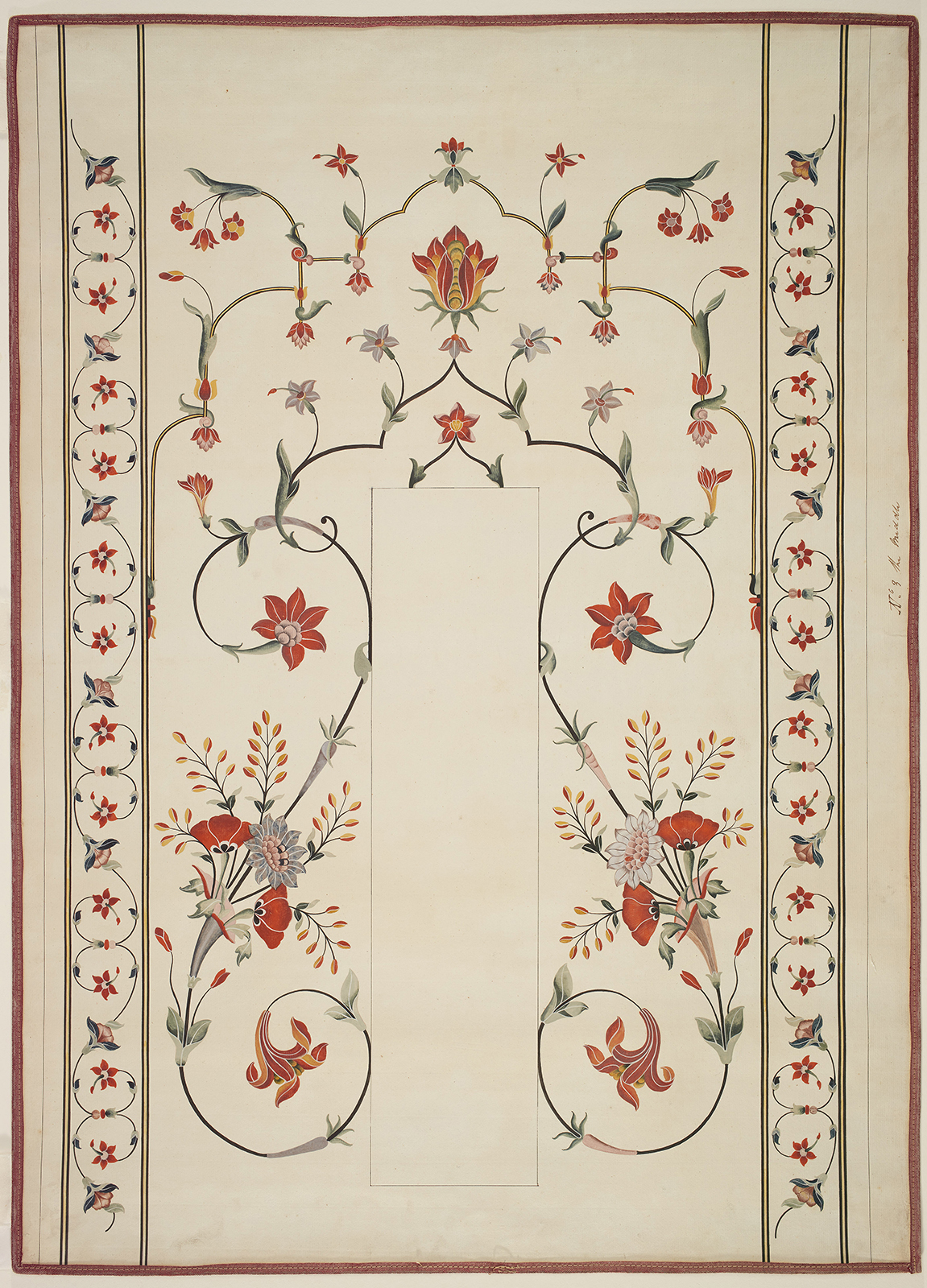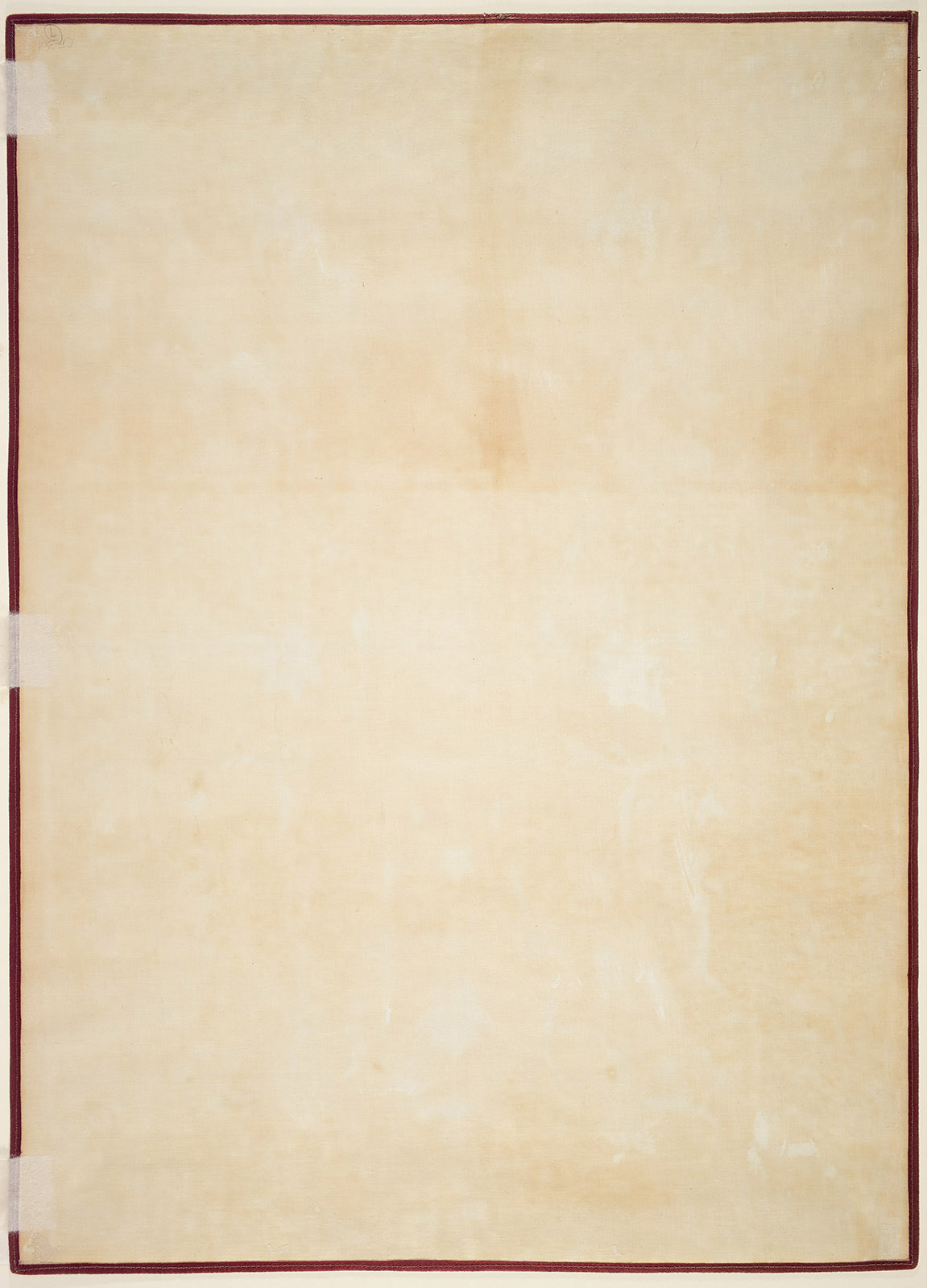Click on the image to zoom
Drawing of the Tombstone of Shah Jahan
- Accession Number:AKM971
- Place:India, Agra
- Dimensions:75 cm × 54 cm
- Date:ca. 1820
- Materials and Technique:Opaque watercolour on paper
During the reign of the great Mughal emperor Shah Jahan (r. 1627–56), floral patterns became all the rage, covering textiles and carpets as well as architecture. The most notable application of this floral decoration can be found at the Taj Mahal, the tomb built by Shah Jahan for his wife, which is decorated with inlaid motifs created with an array of precious stones. This watercolour painting shows the design on the top of Shah Jahan’s cenotaph (grave marker), a masterpiece of delicate draftsmanship and the inlay technique.
- Marika Sardar
Note: This online resource is reviewed and updated on an ongoing basis. We are committed to improving this information and will revise and update knowledge about this object as it becomes available.




